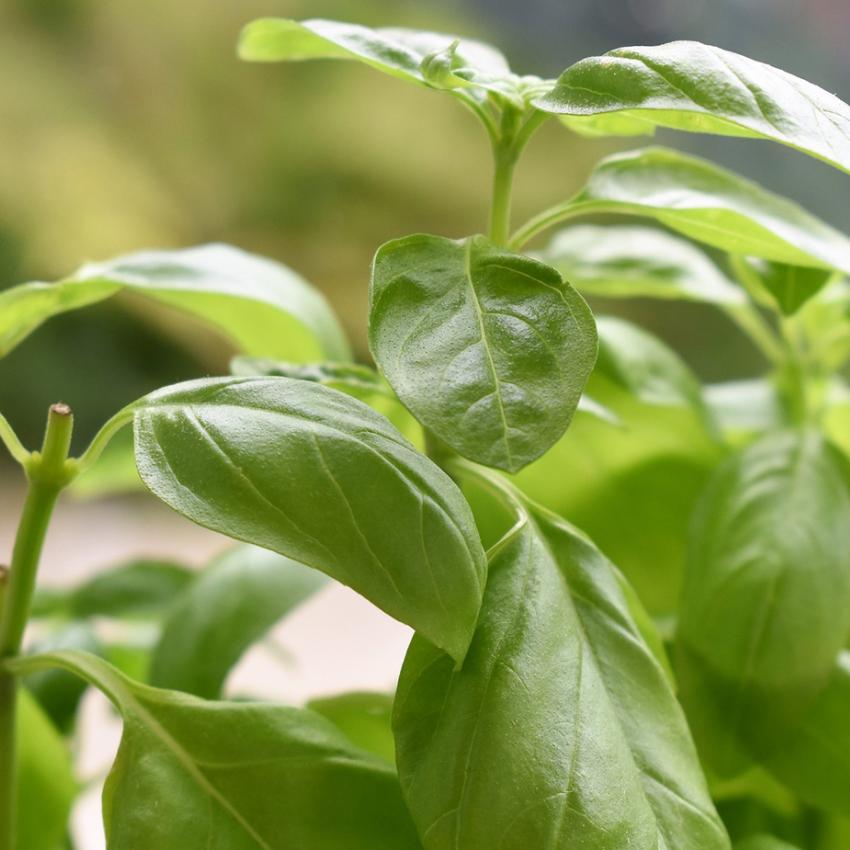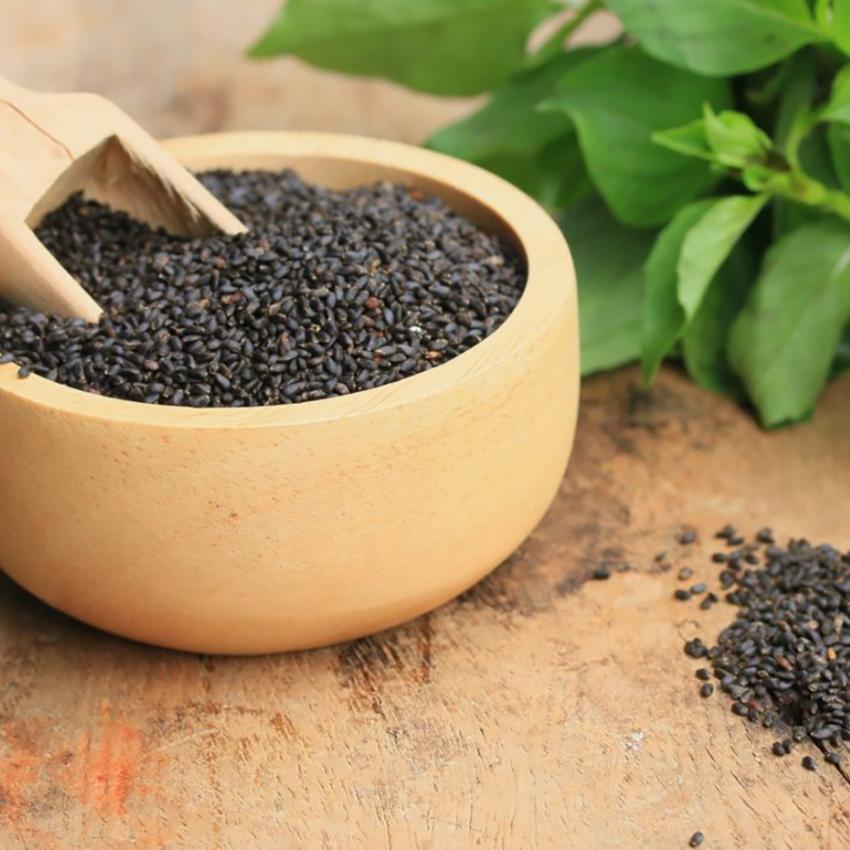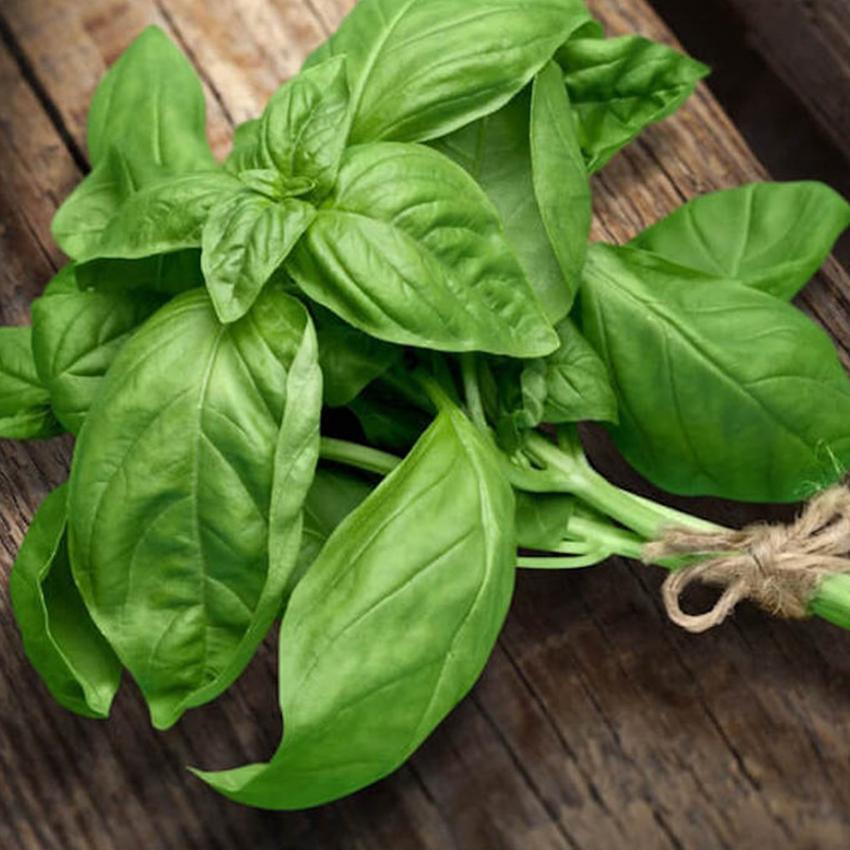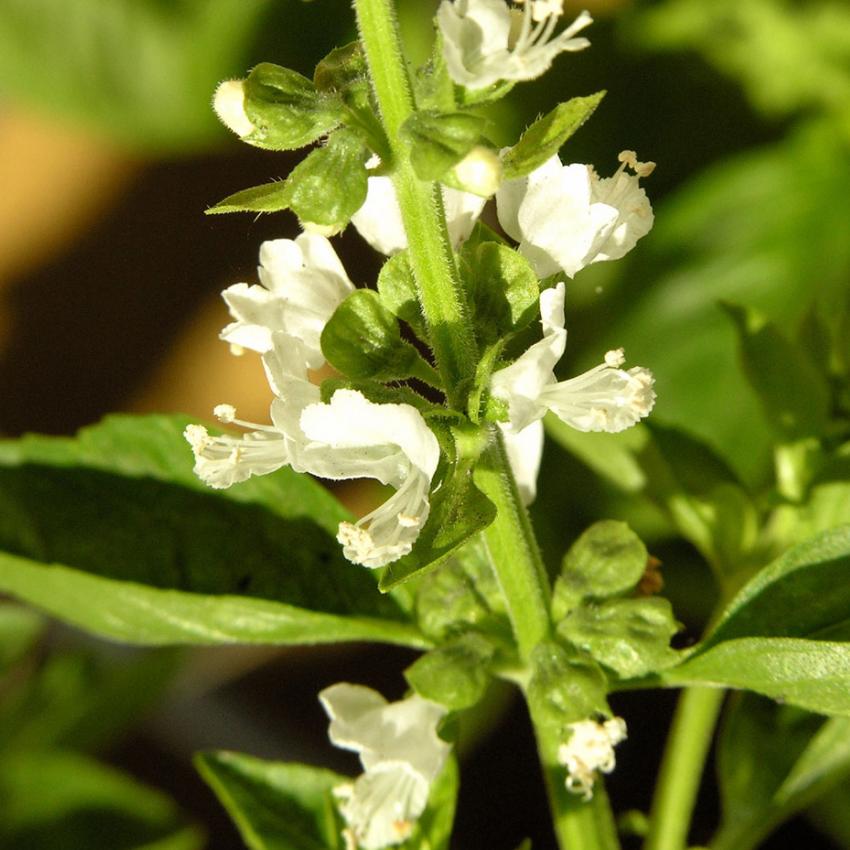



Basil
Ocimum basilicum
Basil is a culinary herb of the family Lamiaceae (mints). It is native to tropical regions from central Africa to Southeast Asia. It is a tender plant, and is used in worldwide cuisines. Depending on the species and cultivar, the leaves may taste somewhat like anise, with a strong, pungent, often sweet smell.
The name "basil" comes from Latin, basilius, and Greek ‘basilikón phutón’ (royal plant) possibly because the plant was believed to have been used in royal perfume production. The Latin name has been confused with basilisk (mythical creature), as it was supposed to be an antidote to the basilisk's venom.
Basil is most commonly used fresh in recipes and is generally added at the last moment, as cooking quickly destroys the flavor. The dried herb also loses most of its flavour, and what little flavor remains tastes very different and hay-like. Basil is one of the main ingredients in pesto—a green Italian oil-and-herb sauce. The Chinese use fresh or dried basil in soups and other foods. In Taiwan, people add fresh basil leaves to thick soups. They also eat fried chicken with deep-fried basil leaves. Basil is commonly steeped in cream or milk to create an interesting flavor in ice cream or chocolates (such as truffles). The basil flower buds have a more subtle flavor and they are edible. When soaked in water, the seeds of several basil varieties become gelatinous, and are used in Asian drinks and desserts such as faluda, sharbat-e-rihan, or hột é.
Research studies of the essential oil showed antifungal and insect-repelling properties, including potential toxicity to mosquitos.

Find the plant...
